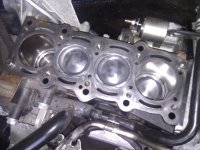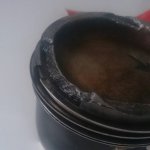Are you sure:
List of FIRE engines
The FIRE engine has been available in the following displacements:
List of FIRE engines
The FIRE engine has been available in the following displacements:
- 769 cc (0.8 L) - 65 mm bore x 58 mm stroke
- [ame="http://en.wikipedia.org/wiki/Single_overhead_camshaft"]Overhead camshaft - Wikipedia, the free encyclopedia@@AMEPARAM@@<title>Overhead camshaft - Wikipedia, the free encyclopedia</title>@@AMEPARAM@@Overhead camshaft[/ame] (1986 - 1992)
- 999 cc (1.0 L) - 70 mm bore x 64.9 mm stroke
- 8v (1986 - 1993)
- 8v SPI (1987 - 2003)
- [ame="http://en.wikipedia.org/wiki/Double_overhead_camshaft"]Overhead camshaft - Wikipedia, the free encyclopedia@@AMEPARAM@@<title>Overhead camshaft - Wikipedia, the free encyclopedia</title>@@AMEPARAM@@Overhead camshaft[/ame] SMPI (1998 - 2003, Brazil only)
- 8v SMPI Flex-fuel (2005 - current, Brazil only)
- 1108 cc (1.1 L) - 70 mm x 72 mm
- 8v (70 mm x 72 mm) (1983 - 1993)
- 8v SPI (1993 - 2000)
- 8v SMPI (2001 - current)
- 1242 cc (1.2 L) - 70.8 mm bore x 78.9 mm stroke
- 8v MPI (1993 - 1999)
- 8v SMPI (1993 - 2009)
- 8v SMPI [ame="http://en.wikipedia.org/wiki/Variable_valve_timing"]Variable valve timing - Wikipedia, the free encyclopedia@@AMEPARAM@@<title>Variable valve timing - Wikipedia, the free encyclopedia</title>@@AMEPARAM@@Variable valve timing[/ame] (2007 - current)
- 16v SMPI (1998 - 2009)
- 1368 cc (1.4 L) SMPI - 72 mm bore x 84 mm stroke
- 8v (2003 - current)
- 8v [ame="http://en.wikipedia.org/wiki/Variable_valve_timing"]Variable valve timing - Wikipedia, the free encyclopedia@@AMEPARAM@@<title>Variable valve timing - Wikipedia, the free encyclopedia</title>@@AMEPARAM@@Variable valve timing[/ame] (2005 - current)
- 8v Flex-fuel (2005 - current, Brazil only)
- 16v (2005 - current)
- 16v StarJet [ame="http://en.wikipedia.org/wiki/Variable_valve_timing"]Variable valve timing - Wikipedia, the free encyclopedia@@AMEPARAM@@<title>Variable valve timing - Wikipedia, the free encyclopedia</title>@@AMEPARAM@@Variable valve timing[/ame] – [ame="http://en.wikipedia.org/wiki/Variable_length_intake_manifold"]Variable-length intake manifold - Wikipedia, the free encyclopedia@@AMEPARAM@@<title>Variable-length intake manifold - Wikipedia, the free encyclopedia</title>@@AMEPARAM@@Variable-length intake manifold[/ame] (2005 - current)
- 16v [ame="http://en.wikipedia.org/wiki/Turbocharging"]Turbocharger - Wikipedia, the free encyclopedia@@AMEPARAM@@<title>Turbocharger - Wikipedia, the free encyclopedia</title>@@AMEPARAM@@Turbocharger[/ame] (2006 - current)
- 16v [ame="http://en.wikipedia.org/wiki/Multiair"]MultiAir - Wikipedia, the free encyclopedia@@AMEPARAM@@<title>MultiAir - Wikipedia, the free encyclopedia</title>@@AMEPARAM@@MultiAir[/ame] (2009 - current)
- 16v MultiAir Turbo (2009 - current)



